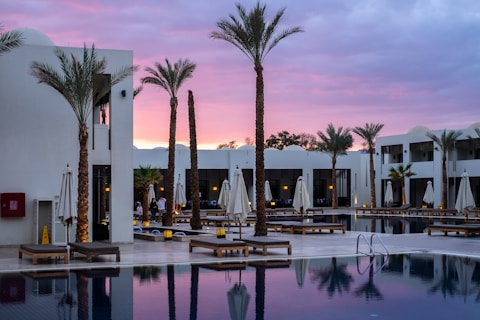Rajghat Memorial
Rajghat Memorial things to do, attractions, restaurants, events info and trip planning
Description
Ratings
Plan your stay
Posts
Raj Ghat is a memorial dedicated to Mahatma Gandhi, located in Delhi, India. Here are some key facts about Raj Ghat: 1. _Location_: Situated on the banks of the Yamuna River in Delhi. 2. _Design_: Designed by architect Vanu Bhuta, the memorial features a black marble platform marking the spot where Gandhi was cremated. 3. _Inauguration_: Opened in 1948, shortly after Gandhi's death. 4. _Significance_: A sacred place for Indians and a symbol of India's struggle for independence. 5. _Visitors_: A popular tourist destination, attracting visitors from around the world. 6. _Ceremonies_: Various events and ceremonies are held at Raj Ghat to commemorate Gandhi's life and legacy. 7. _Gardens_: The memorial is surrounded by beautiful gardens and trees. 8. _Museum_: A nearby museum showcases Gandhi's personal belongings and photos of his life. 9. _Security_: Strict security measures are in place to protect visitors. 10. _Timings_: Open daily from 5:30 am to 7:30 pm. Raj Ghat is a place of great historical and cultural significance in India, and a must-visit destination for those traveling to Delhi. Additional facts: - The memorial is built using red sandstone and black marble. - The platform is surrounded by a square garden with walking paths. - The museum exhibits a collection of Gandhi's personal items, including his spectacles and spinning wheel. - Raj Ghat is also the final resting place of other notable Indian leaders, including Jawaharlal Nehru and Indira Gandhi. - The memorial is maintained by the Government of India and is a popular spot for political and cultural events. Here are some more facts about Raj Ghat: 1. _Eternal Flame_: An eternal flame burns at one end of the platform, symbolizing the eternal spirit of Gandhi. 2. _Gandhi's Last Words_: The memorial features an inscription of Gandhi's last words, "Hey Ram" (Oh God), which he uttered at the time of his assassination. 3. _Quotes and Sayings_: The walls surrounding the memorial feature quotes and sayings of Gandhi, highlighting his philosophy of non-violence and peace. 4. _Prayer Services_: Prayer services are held daily at Raj Ghat, where visitors can participate in chanting and singing devotional songs. 5. _Special Events_: Raj Ghat hosts various special events throughout the year, including Gandhi's birthday (October 2) and martyrdom day (January 30). 6. _Visitor Facilities_: The memorial complex has facilities for visitors, including drinking water, toilets, and seating areas. 7. _Security Check_: Visitors are required to undergo security checks before entering the memorial complex. 8. _Photography_: Photography is allowed for personal use, but tripods and commercial photography require permission. 9. _Respect and Decorum_: Visitors are expected to maintain respect and decorum within the memorial complex, including removing their shoes before entering the platform. 10. _Free Entry_: Entry to Raj Ghat is free, making it accessible to visitors from all walks of life. Raj Ghat is a place of great historical and cultural significance, and visitors are expected to behave in a respectful and dignified manner.
VIVEK MISHRAVIVEK MISHRA
00
### Review for Rajghat #### Title: A Profound and Peaceful Experience Visiting Rajghat, the memorial dedicated to Mahatma Gandhi in New Delhi, is a deeply moving experience that offers both tranquility and a profound sense of history. Situated on the banks of the Yamuna River, Rajghat is not just a tourist destination but a place of reflection and respect. #### Atmosphere and Ambiance The moment you step into Rajghat, you are greeted by a serene and solemn atmosphere. The beautifully maintained gardens and the simplicity of the black marble platform where Gandhi was cremated create an environment that encourages contemplation. The eternal flame burning at one end of the platform serves as a poignant reminder of Gandhi's enduring legacy. #### Historical Significance Rajghat holds immense historical significance as it marks the spot where Mahatma Gandhi, the Father of the Nation, was cremated on January 31, 1948. The site is a powerful symbol of Gandhi's life and his relentless pursuit of truth and non-violence. The inscription on the memorial, "Hey Ram," believed to be Gandhi's last words, adds a deeply personal touch to the memorial. #### Visitor Experience The pathway leading to the memorial is lined with lush greenery, and there are several other memorials dedicated to Indian leaders nearby, making it a comprehensive historical site. The atmosphere is respectful and peaceful, with visitors often seen walking quietly, many in silent prayer or contemplation. Information plaques and boards provide context about Gandhi's life and the significance of Rajghat, enhancing the educational value of the visit. There is also a museum nearby that offers further insights into Gandhi's life and philosophy through photographs, writings, and various artifacts. #### Accessibility and Facilities Rajghat is easily accessible by road and is well connected by public transport. The site is open to visitors every day from sunrise to sunset, with no entry fee, making it accessible to everyone. Cleanliness is well-maintained, and the gardens provide a pleasant area for walking and relaxation. There are also basic amenities like restrooms and drinking water available for visitors. #### Final Thoughts A visit to Rajghat is not just about paying homage to Mahatma Gandhi but also about connecting with the principles of peace, non-violence, and truth that he stood for. Whether you are a history enthusiast, a follower of Gandhi’s philosophy, or simply someone seeking a peaceful retreat within the bustling city of Delhi, Rajghat is a place that leaves a lasting impression. In summary, Rajghat is a must-visit site for anyone traveling to New Delhi. It offers a unique blend of historical reverence and serene beauty, making it a perfect spot for reflection and learning about one of the greatest leaders in history.
Shrikant borudeShrikant borude
10
**Rajghat, Delhi: A Reverent Tribute to the Father of the Nation** *Rajghat*, nestled along the tranquil banks of the Yamuna River in Delhi, is not just a memorial but a sacred pilgrimage site for admirers of Mahatma Gandhi, the towering figure of India's independence movement. Visiting Rajghat is akin to stepping into the pages of history, where the echoes of Gandhi's principles of truth, nonviolence, and selflessness resonate with every visitor. *Ambiance and Setting:* As you approach Rajghat, you're greeted by a serene expanse of greenery and meticulously landscaped gardens. The simplicity of the memorial's design is intentional, reflecting Gandhi's own philosophy of minimalism and humility. The hushed tranquility of the surroundings invites introspection and reverence, creating a space for visitors to connect with Gandhi's enduring legacy. *Meditative Walk:* Upon entering Rajghat, visitors are greeted by the black marble platform marking the spot where Gandhi was cremated on January 31, 1948. The path leading to the platform is lined with trees and shrubs, creating a serene avenue for contemplation. Many visitors choose to walk barefoot as a mark of respect, immersing themselves in the meditative atmosphere of the memorial. *Memorial Structure:* At the heart of Rajghat stands a simple, open-air structure made of black stone, under which lies a perpetual flame symbolizing the eternal presence of Gandhi's ideals. Surrounding the flame are inscriptions of Gandhi's most profound teachings, reminding visitors of the timeless relevance of his message in today's world. *Gandhi Museum:* Adjacent to Rajghat is the Gandhi Museum, a treasure trove of artifacts, photographs, and documents chronicling Gandhi's life and legacy. The museum offers a comprehensive glimpse into Gandhi's remarkable journey, from his early years in South Africa to his pivotal role in India's struggle for independence. Exhibits highlighting Gandhi's principles of nonviolence, communal harmony, and social justice serve as a poignant reminder of his enduring relevance in today's world. *Reflection and Contemplation:* For many visitors, Rajghat is more than just a historical site—it's a place of pilgrimage, where they can pay homage to Gandhi's memory and draw inspiration from his unwavering commitment to truth and righteousness. Whether you're a history enthusiast, a spiritual seeker, or simply a curious traveler, a visit to Rajghat is a humbling and transformative experience that leaves an indelible mark on the soul. In conclusion, Rajghat is not merely a memorial but a living testament to the ideals and principles that Mahatma Gandhi lived and died for. Its tranquil ambiance, meditative surroundings, and profound symbolism make it a must-visit destination for anyone seeking to understand the essence of Gandhian philosophy and its enduring impact on the world. A visit to Rajghat is not just a journey through history but a journey of the spirit—an opportunity to reflect, contemplate, and renew our commitment to the values of truth, justice, and compassion that Gandhi embodied in his life and work.
dhdy chhxdhdy chhx
00
My visit to Gandhi Smriti in New Delhi was an incredibly moving and insightful experience. This historic site, dedicated to the memory of Mahatma Gandhi, offers a profound journey into the life and teachings of one of the greatest leaders of our time. I wholeheartedly give it a five-star rating for its exceptional preservation, informative exhibits, and the powerful atmosphere it creates. Gandhi Smriti meticulously preserves the house where Mahatma Gandhi lived during the last months of his life. Stepping into the same rooms where he resided and walking the very path he took is an indescribable feeling. The attention to detail in maintaining the authenticity of the place is commendable, allowing visitors to connect intimately with the life and ideals of this extraordinary visionary. The museum at Gandhi Smriti is a treasure trove of historical artifacts, photographs, and interactive displays that provide deep insights into Mahatma Gandhi's life and his philosophy of non-violence. Each exhibit is thoughtfully curated, giving visitors a comprehensive understanding of his principles, struggles, and immense contributions to India's freedom movement. The museum succeeds in bringing history to life, evoking a sense of reverence and admiration for the man known as the "Father of the Nation." The highlight of my visit was the Martyr's Column, marking the spot where Mahatma Gandhi was assassinated. It stands as a solemn reminder of his sacrifice and unwavering commitment to peace and justice. The serene atmosphere surrounding this memorial invites quiet contemplation and introspection, making it a truly sacred space. The staff at Gandhi Smriti deserves special mention for their warmth and knowledge. Their passion for Gandhi's legacy shines through as they guide visitors through the exhibits, patiently answering questions and sharing anecdotes. Their dedication adds an extra layer of depth to the experience, making the visit both enlightening and personal. Gandhi Smriti is not merely a museum; it is a pilgrimage for anyone seeking to understand the principles of truth, non-violence, and social justice that Mahatma Gandhi championed. It serves as a reminder of the values that continue to shape India's identity and inspire people worldwide. In conclusion, Gandhi Smriti is a place of deep historical significance that offers a profound and transformative experience. It is a testament to the extraordinary life and teachings of Mahatma Gandhi, leaving visitors with a renewed sense of purpose, compassion, and dedication to social change. I highly recommend this remarkable destination to everyone, as it provides an opportunity to connect with the essence of one of humanity's greatest leaders.
Harman Saber MaaroofHarman Saber Maaroof
10
My recent visit to Rajghat, the final resting place of Mahatma Gandhi, was a deeply moving and spiritually uplifting experience. Located on the banks of the Yamuna River in Delhi, this serene memorial serves as a poignant tribute to the man who led India to independence through the principles of nonviolence, truth, and civil disobedience. Approaching Rajghat, I was struck by the simplicity and tranquility of the surroundings, with lush greenery and flowering trees providing a peaceful sanctuary amidst the bustling cityscape of Delhi. The marble platform, surrounded by immaculately maintained gardens and walkways, offered a fitting setting for paying homage to the memory of the Father of the Nation. At the center of Rajghat lies the black marble slab marking the spot where Mahatma Gandhi was cremated following his assassination in 1948. The inscription "Hey Ram" (Oh God) engraved on the slab serves as a solemn reminder of his final moments and his unwavering commitment to truth and nonviolence. Surrounding the memorial platform are lush gardens and trees planted by visiting dignitaries and heads of state from around the world, symbolizing the global impact of Mahatma Gandhi's teachings and philosophy. The serene atmosphere of Rajghat, with its tranquil waters and chirping birds, creates a sense of reverence and contemplation that invites visitors to reflect on Gandhi's timeless message of peace, tolerance, and social justice. One of the highlights of my visit was the simplicity and humility of the surroundings, which stood in stark contrast to the grandeur and opulence of many other memorials and monuments. The absence of ornate decorations or elaborate statues served as a powerful reminder of Mahatma Gandhi's own ethos of simplicity, austerity, and service to humanity. In conclusion, Rajghat is not just a memorial to Mahatma Gandhi but a living testament to his enduring legacy and teachings. Whether you're a history enthusiast, a spiritual seeker, or simply a curious traveler, a visit to Rajghat is a profoundly moving and humbling experience that honors the life and contributions of one of the greatest leaders of the 20th century. Note: Visitors are advised to maintain silence and respect the sanctity of the memorial grounds when visiting Rajghat. Additionally, photography is allowed but visitors are encouraged to do so with reverence and sensitivity.
Sumit BarSumit Bar
00
Today i visited this place with my friends. And I saw that the atmosphere here is very calm and peaceful. History of Raj Ghat Raj Ghat is a memorial dedicated to Mahatma Gandhi in Delhi, India. Originally it was the name of a historic ghat of Old Delhi (Shahjahanabad). Close to it, and east of Daryaganj was the Raj Ghat Gate of the walled city, opening at Raj Ghat to the west bank of the Yamuna River. Later the memorial area was also called Raj Ghat. It is a black marble platform that marks the spot of Mahatma Gandhi's cremation, Antyeshti (last rites) on 31 January 1948, a day after his assassination. It is left open to the sky while an eternal flame burns at one end. Located on Delhi's Ring Road, officially known as Mahatma Gandhi Road, a stone footpath flanked by lawns leads to the walled enclosure that houses the memorial. The materials used in the memorial, especially in the recesses, raise a few questions about the nature of Gandhian architecture in India. There is a difference between the architecture of Rajghat and a Gandhian low-cost housing architecture. Unlike the hard material faces of some portions of Rajghat, a Gandhian low-cost housing architecture has a decidedly perishable character. In this sense the event of the construction of the Rajghat Memorial belongs within a more hard-modernist Gandhian architectural history in India, distinctly removed from a Gandhian low-cost architectural history of perishable materials. Actually this is also a garden where people from nearby areas go for daily morning walk. If we talk about the vibes of this place, then it is very relaxing as well as refreshing. One important thing to go to this park is you have to go through the security check. But there is no ticket of any kind to visit this place. If we talk about whether there is wheelchair accessibility or not. So I apologize that I didn't see anything here to tell me that there is wheelchair accessibility available. If we talk about parking then there is a big parking area available on the opposite side of the park where you can easily park your car. And here till date (06/05/2023) no parking fee of any kind is charged. Cleaning - 3.5 out of 5 Staff - 3.5 out of 5 Visit at least once.
UDIT CHAWLAUDIT CHAWLA
30
Nearby Attractions Of Rajghat Memorial
Raj Ghat, Delhi
Feroz Shah Kotla Fort
Shantivan
National Gandhi Museum and Library
Zeenat-ul Masjid
Delhi Gate
Mahatma Gandhi Museum
Shakti Sthal, Delhi
Delhi-Topra Ashokan Pillar
Kisan Ghat

Raj Ghat, Delhi
4.5
(9.9K)Click for details

Feroz Shah Kotla Fort
4.2
(3.6K)Click for details

Shantivan
4.4
(1.2K)Click for details

National Gandhi Museum and Library
4.5
(454)Click for details
Nearby Restaurants Of Rajghat Memorial
Changezi Chicken
Domino's Pizza | Daryaganj, New Delhi
Zaika Foods
Nand Lal Dhaba
Akash Deep Restaurant
Guptaji Ki Pav Bhaji
Sugandh Restaurant
Al-Yamin (Dariyaganj)
Aap Ki Pasand Tea Gallery (India's Oldest Gourmet Tea Store), Sancha Tea
Nazeer Foods

Changezi Chicken
4.0
(1.6K)Click for details

Domino's Pizza | Daryaganj, New Delhi
3.8
(1.3K)Click for details

Zaika Foods
4.2
(1.1K)$$
Click for details

Nand Lal Dhaba
3.9
(507)Click for details
Reviews
- Unable to get your location





